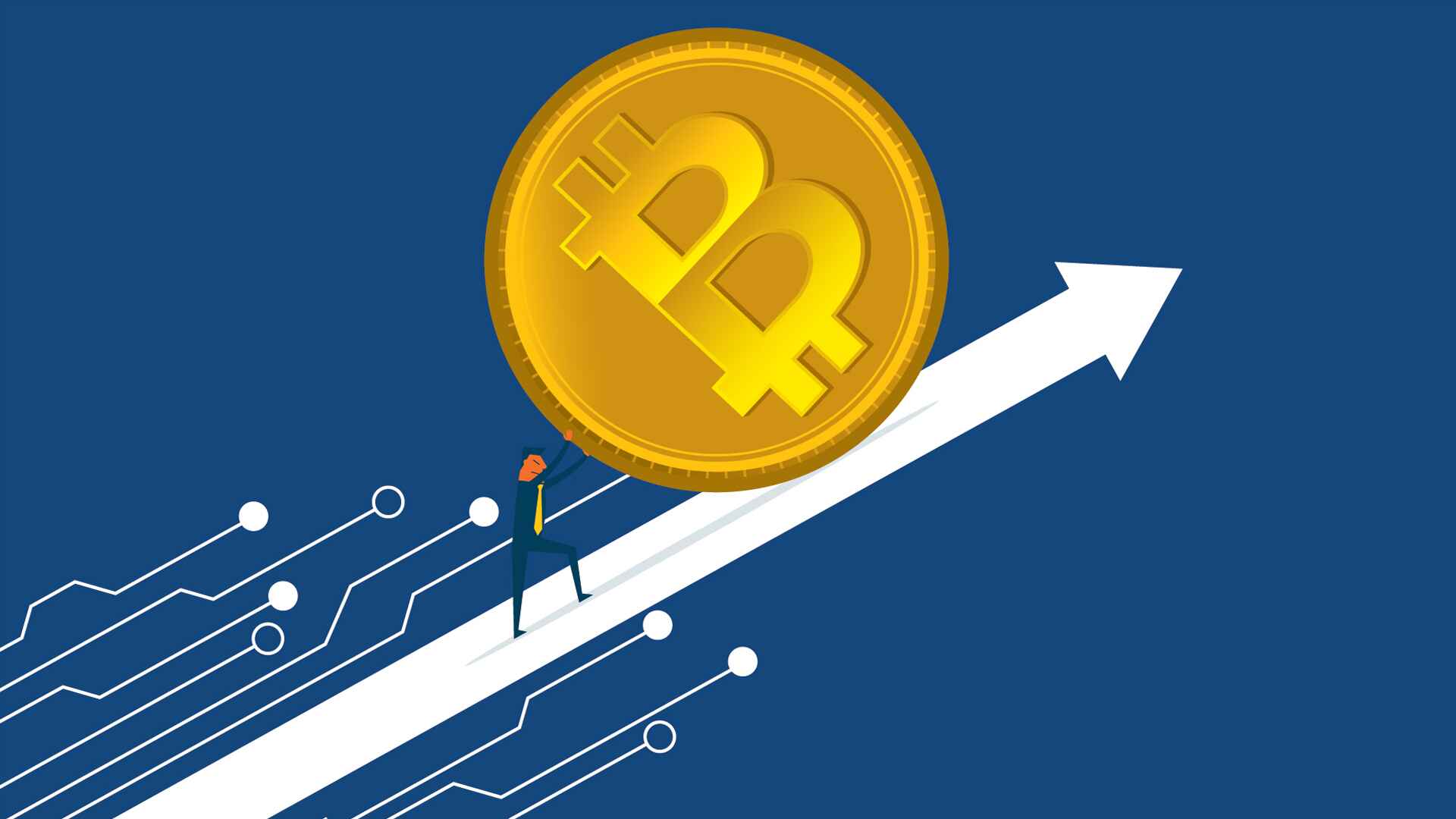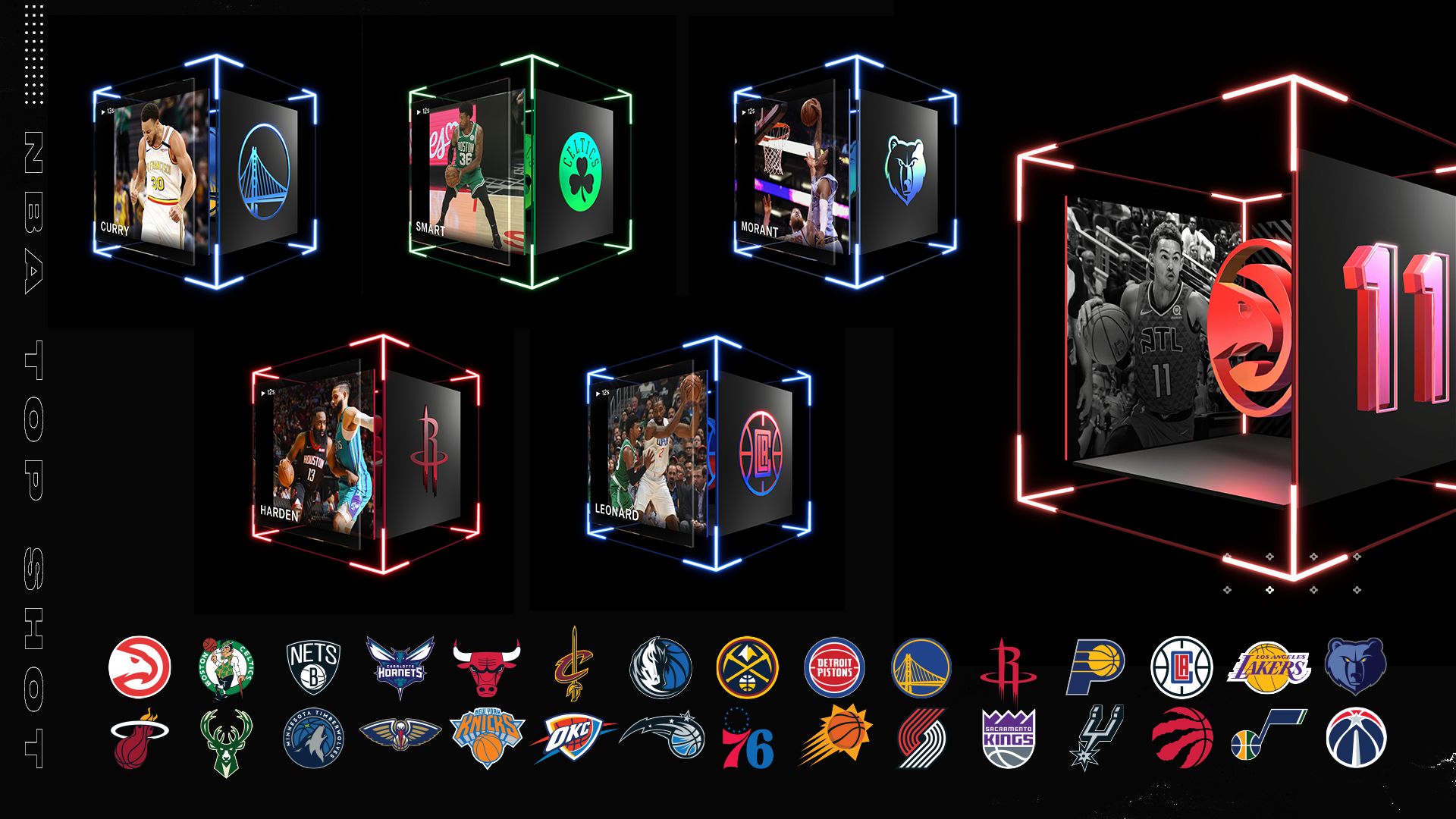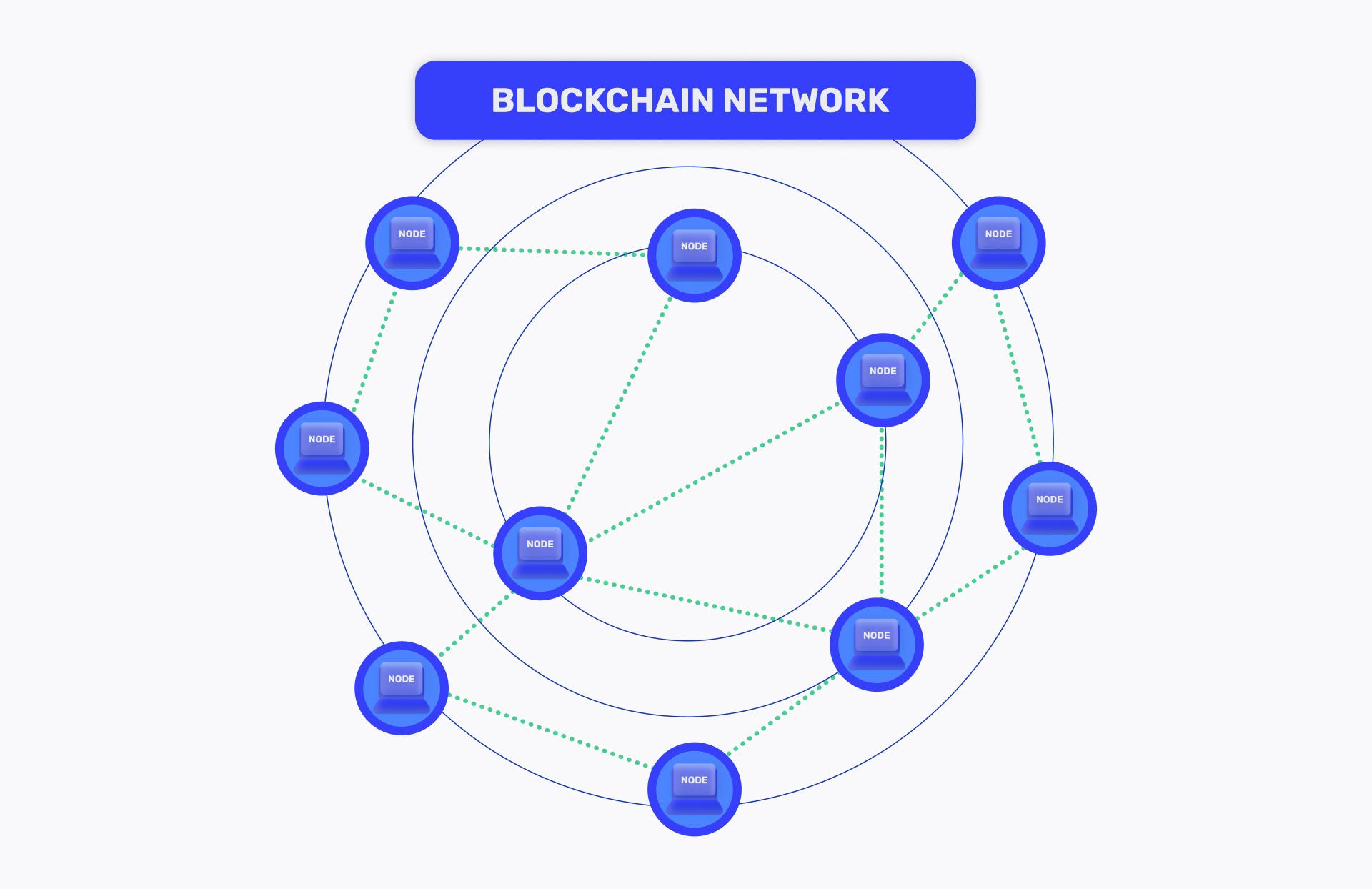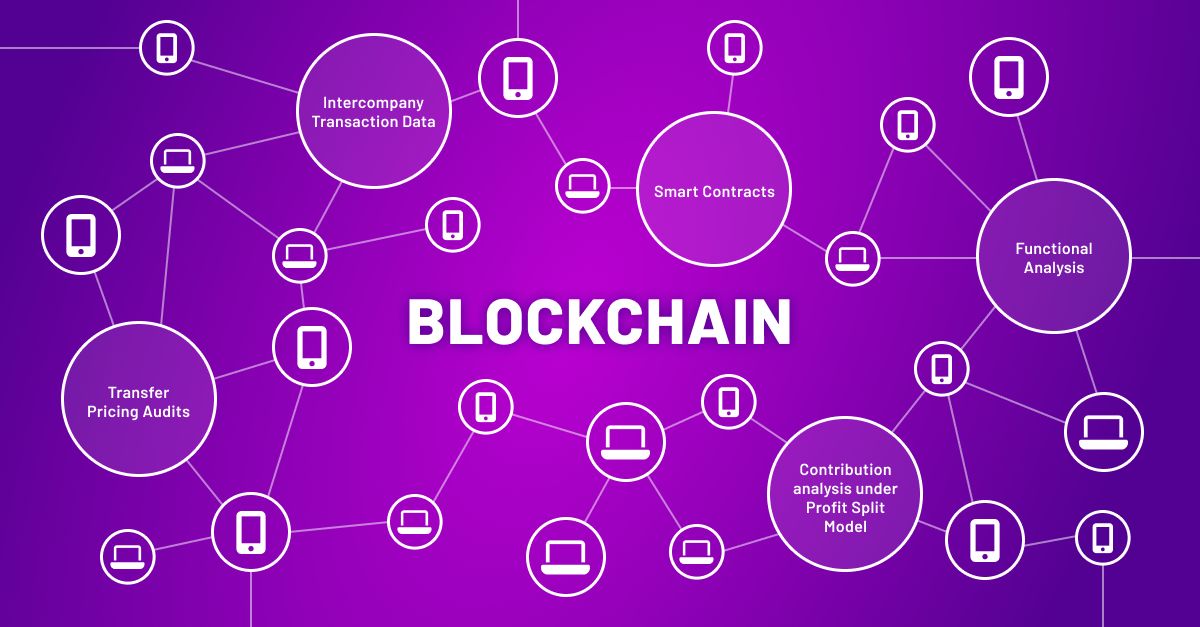Introduction
Welcome to the exciting world of blockchain technology! In recent years, blockchain has emerged as a revolutionary concept that has the potential to disrupt various industries, from finance to supply chain management. The decentralized and immutable nature of blockchain has made it a reliable and transparent solution for secure data storage and transaction processing.
If you have ever wondered how to create your own blockchain, you’re in the right place. This article will guide you through the process, step by step, so that you can embark on your own blockchain journey.
But first, let’s understand the basics of blockchain. At its core, a blockchain is a distributed ledger that records and verifies transactions across multiple nodes. Each transaction is bundled into a block and added to a chain of previous blocks, forming an unchangeable and chronological record of all the transactions. The decentralized nature of blockchain eliminates the need for intermediaries, reduces the risk of fraud, and enhances transparency and trust.
Creating your own blockchain can offer numerous benefits, such as developing custom decentralized applications (DApps), launching your own cryptocurrency, or implementing blockchain solutions in your business. However, it requires a deep understanding of the underlying technology and careful planning.
In this article, we will explore the essential steps to create your own blockchain. We will cover topics such as choosing the right technology, setting up the development environment, designing the data structure, writing smart contracts, implementing consensus mechanisms, testing, debugging, and deploying your blockchain.
By the end of this article, you will have a solid foundation to create and deploy your own blockchain. So, let’s dive in and unlock the limitless potential of blockchain technology!
Understanding the Basics of Blockchain Technology
Before diving into the process of creating your own blockchain, it is important to have a clear understanding of the fundamental concepts of blockchain technology.
At its core, blockchain is a decentralized and distributed ledger that records and verifies transactions across multiple nodes. Each transaction is grouped into a block and added to a chain of previous blocks, creating a chronological and immutable record of all the transactions.
One of the key features of blockchain is its decentralized nature. Instead of relying on a central authority, such as a bank or government, the blockchain network operates through a consensus algorithm, where all participating nodes verify and validate the transactions. This decentralization enhances transparency, security, and trust, as no single entity has control over the entire network.
Another important aspect of blockchain is its immutability. Once a transaction is added to the blockchain, it becomes extremely difficult to alter or tamper with. This is due to the cryptographic hash function employed in the block creation process. Each block contains a unique hash that is generated based on the data of the previous block, creating a chain of interlinked blocks that cannot be modified without affecting the entire blockchain.
Blockchain technology is not limited to just recording financial transactions. It has the potential to revolutionize various industries by enabling the development of decentralized applications (DApps) and smart contracts. DApps are applications that run on a blockchain network, utilizing its decentralized infrastructure and security features. Smart contracts, on the other hand, are self-executing contracts with predefined rules and conditions that are automatically enforced and executed on the blockchain.
Blockchain technology also offers enhanced security and privacy. By leveraging cryptographic algorithms, transactions are encrypted and secured, making it difficult for unauthorized parties to access or manipulate the data. Additionally, as transactions are recorded on a public ledger, the transparent nature of blockchain ensures accountability and reduces the risk of fraud.
Now that we have a basic understanding of blockchain technology, let’s move on to the next section, where we will explore the planning process for creating your own blockchain.
Planning Your Own Blockchain
Creating your own blockchain requires careful planning and consideration of various factors. Before diving into the technical aspects, it is crucial to define the purpose and goals of your blockchain project.
The first step in the planning phase is to identify the problem or use case that your blockchain will address. Are you looking to develop a decentralized application (DApp), launch a new cryptocurrency, or implement blockchain solutions in your business processes? Clearly defining your objectives will help you determine the necessary features and functionalities of your blockchain.
Next, consider the target audience or users of your blockchain. Will it cater to a specific industry or provide a general-purpose solution? Understanding your target audience will help you design the appropriate system architecture and user experience to meet their needs.
Additionally, it is essential to think about the scalability and performance requirements of your blockchain. Will it handle a high volume of transactions, or will it be used for specific use cases with lower transactional demands? Scalability considerations will influence factors such as consensus mechanisms, data storage, and network infrastructure.
Moreover, legal and regulatory aspects should not be overlooked. Different jurisdictions have different regulations regarding cryptocurrencies and blockchain technology. Ensure that you understand and comply with the legal requirements applicable to your project.
Budgeting is another critical aspect to consider when planning your own blockchain. Developing and maintaining a blockchain can be resource-intensive, requiring experienced developers, infrastructure, and ongoing support and maintenance. Evaluate your financial resources and allocate them accordingly to ensure a successful and sustainable project.
Lastly, it is important to assess the existing blockchain technologies and platforms available. Determine whether it makes sense to build your blockchain from scratch or leverage existing frameworks, such as Ethereum or Hyperledger. Evaluating the pros and cons of each option will help you make an informed decision.
By thoroughly planning your own blockchain project, you will have a solid foundation for its successful development and implementation. In the next section, we will discuss the process of choosing the right technology for your blockchain.
Choosing the Right Technology
When it comes to creating your own blockchain, choosing the right technology is crucial. There are several blockchain platforms and frameworks available, each with its own set of features and capabilities. It’s essential to evaluate these options and select the one that best aligns with your project’s requirements.
One of the most popular and widely used blockchain platforms is Ethereum. It provides a robust ecosystem for developing and deploying smart contracts and decentralized applications (DApps). Ethereum’s flexibility and wide adoption make it suitable for a variety of use cases, from finance to gaming.
If privacy and permissioned blockchain networks are more aligned with your project’s requirements, Hyperledger Fabric is a popular choice. Developed by the Linux Foundation, Hyperledger Fabric allows for greater control over network participants and data access.
Other blockchain frameworks, such as Corda and Quorum, offer unique features tailored to specific industries. Corda focuses on security and privacy for financial applications, while Quorum, built on Ethereum, addresses the specific needs of the finance sector.
Consider factors such as the ease of development, community support, scalability, and interoperability when selecting a blockchain technology. Assessing these factors will help you determine the most suitable platform for your project.
Additionally, decide whether you want to build your blockchain from scratch or leverage existing frameworks and platforms. Building from scratch provides more control and customization options but requires more time and resources. On the other hand, utilizing existing platforms can speed up development but may limit certain functionalities.
Furthermore, it’s important to keep in mind the programming languages and tools associated with the chosen technology. Solidity, for example, is the programming language used for Ethereum smart contracts. Familiarize yourself with the tools and languages required for development on your chosen platform.
Ultimately, the right technology for your blockchain project will depend on your specific use case, requirements, and resources. Take the time to research and evaluate the available options to ensure you make an informed decision.
In the next section, we will delve into setting up the development environment for your blockchain project.
Setting Up the Development Environment
Once you have chosen the right technology for your blockchain project, the next step is to set up the development environment. A proper development environment ensures a smooth and efficient workflow throughout the development process.
The first consideration is selecting the operating system and development tools compatible with your chosen blockchain platform. Most blockchain platforms provide detailed documentation on the supported operating systems and the necessary tools for development. Ensure that you fulfill the system requirements and have the appropriate software installed.
If you are using Ethereum, you will need to set up a development environment compatible with Solidity, the programming language used for Ethereum smart contracts. Tools such as Truffle and Ganache can be used to compile, deploy, and test your smart contracts locally. These tools provide a sandboxed environment for rapid development and testing.
For Hyperledger Fabric projects, you will need to set up the Hyperledger Fabric development environment. The Hyperledger Fabric documentation provides step-by-step instructions on setting up the necessary prerequisites, such as Docker, Node.js, and GoLang.
Depending on the complexity of your project, you may also consider using integrated development environments (IDEs) that offer specific features for blockchain development. Some popular IDEs for blockchain development include Remix for Ethereum and Visual Studio Code with extensions for various blockchain platforms.
To ensure effective collaboration within your development team, consider setting up version control using tools such as Git. Version control allows for easy tracking of changes, collaboration, and reverting to previous versions if needed.
Furthermore, it is recommended to create a test network or use a test environment for development and testing purposes. This allows you to experiment and validate your smart contracts or applications without impacting the live network or using real resources.
By setting up a well-configured development environment, you can streamline your development process, improve productivity, and ensure a seamless workflow. In the next section, we will explore the process of designing the data structure for your blockchain.
Designing the Data Structure
The data structure of a blockchain is a critical aspect that defines how the information is organized, stored, and accessed within the network. Designing an efficient and scalable data structure is essential for the successful functioning of your blockchain.
At the core of any blockchain data structure is the concept of a block. Each block contains a set of transactions or data, along with a unique identifier called a cryptographic hash. The hash serves as a fingerprint for the block, ensuring its integrity and immutability.
In addition to the block structure, you need to determine the organization of the transaction data within each block. This can be in the form of a linked list or a Merkle tree structure. A linked list allows for easy adding of new transactions but may be slower for verification. On the other hand, a Merkle tree enables efficient verification of transaction integrity but requires additional computation.
Deciding on the proper data model for your blockchain is also crucial. Will your blockchain store simple transactional data or more complex data structures? Depending on your use case, you may need to incorporate additional fields and structures within your blocks to accommodate the specific data requirements.
When designing the data structure, scalability should be a primary consideration. As the number of transactions on your blockchain increases, the data structure should be able to handle the increased load. Considerations such as block size, block interval, and the ability to manage a growing chain of blocks will impact the scalability of your blockchain.
Security and privacy should also be addressed in the data structure design. Incorporating cryptographic mechanisms, such as digital signatures and encryption, can ensure the authenticity and confidentiality of the data stored within the blockchain. Access controls and permissions can be implemented to protect sensitive data from unauthorized access.
Additionally, you should anticipate the future evolution of your blockchain and plan for potential enhancements or modifications to the data structure. This flexibility will enable you to accommodate changing requirements and adapt to the evolving needs of your blockchain application.
By carefully designing the data structure for your blockchain, you will create a solid foundation for storing, organizing, and securing your transactional data. In the next section, we will explore the process of writing the smart contracts that govern the behavior of your blockchain.
Writing the Smart Contracts
Smart contracts are self-executing contracts with the terms of the agreement written directly into the code. They play a crucial role in defining the behavior and logic of your blockchain application. Writing smart contracts requires a solid understanding of the programming languages and frameworks associated with your chosen blockchain technology.
If you are using Ethereum, the most commonly used programming language for writing smart contracts is Solidity. Solidity provides a high-level, object-oriented syntax and is specifically designed for Ethereum smart contracts. It offers features such as contract inheritance, modifiers, and events, making it powerful and versatile.
Start by conceptualizing the specific functionalities and behaviors you want to implement in your smart contracts. Consider the different participants and their roles within the blockchain network. Define the data structures, variables, and functions necessary to represent the desired behaviors accurately.
Ensure that your smart contracts handle input validation properly to prevent any vulnerabilities or exploits. Consider implementing error handling mechanisms to handle exceptional situations and provide robustness to your smart contracts.
Writing secure smart contracts is of utmost importance. Take into account best practices such as avoiding the use of deprecated functions, ensuring proper data handling, and minimizing the surface area for potential attacks. Peer review and auditing of your smart contracts can also help identify any potential security flaws.
Modularity and code reusability are essential when writing smart contracts. Break down complex functionalities into smaller, reusable components that can be easily tested and maintained. This will enhance the efficiency and readability of your codebase.
In addition to Solidity, other programming languages such as Chaincode for Hyperledger Fabric or Vyper for Ethereum can be used for writing smart contracts. Each language has its own syntax and development best practices, so make sure to acquaint yourself with the specific tools and frameworks available.
Once you have written your smart contracts, it’s important to thoroughly test them before deployment. Unit testing, integration testing, and stress testing can help ensure that your smart contracts behave as expected and are free from bugs and vulnerabilities. Tools like Truffle and Ganache can be utilized to facilitate smart contract testing on Ethereum.
By writing well-designed and secure smart contracts, you lay the foundation for the trust and integrity of your blockchain application. In the next section, we will discuss implementing the consensus mechanism, a crucial aspect of any blockchain network.
Implementing Consensus Mechanism
Consensus mechanism is a crucial component of any blockchain network that ensures agreement and consistency among all participating nodes. It determines how nodes in a network reach a consensus on the validity and ordering of transactions. Implementing the right consensus mechanism is essential for the security, reliability, and performance of your blockchain.
One of the most well-known consensus mechanisms is Proof of Work (PoW), used by cryptocurrencies such as Bitcoin and Ethereum. In PoW, nodes compete to solve complex mathematical puzzles, and the first node to find the solution is rewarded with the right to add a new block to the blockchain. While PoW ensures security, it is energy-intensive and can be slower compared to other consensus mechanisms.
Another common consensus mechanism is Proof of Stake (PoS). In PoS, the selection of the next block creator is based on the number of tokens or coins a node holds and is willing to “stake.” This mechanism aims to reduce energy consumption and increase scalability compared to PoW.
Other consensus mechanisms, such as Delegated Proof of Stake (DPoS) and Practical Byzantine Fault Tolerance (PBFT), provide alternative approaches to achieve consensus in blockchain networks. DPoS relies on a small number of trusted nodes to validate transactions, while PBFT requires a consensus among a certain threshold of participating nodes.
When implementing a consensus mechanism, it is important to consider factors such as security, scalability, decentralization, and performance. Evaluate the trade-offs between different mechanisms and choose the one that aligns best with your project’s goals and requirements.
Once you have chosen a consensus mechanism, you need to integrate it into your blockchain network. This typically involves configuring the necessary protocols and algorithms to enable nodes to communicate and agree on the validity of transactions. Each blockchain platform or framework may have different implementations and configurations for consensus mechanisms, so refer to the respective documentation for guidance.
Testing and verifying the consensus mechanism is crucial to ensure its proper functioning. Simulate different scenarios and edge cases to validate the consensus algorithm’s behavior and performance. By conducting thorough testing, you can identify and resolve any potential issues or vulnerabilities before deploying your blockchain network.
Remember that consensus mechanisms can evolve and be improved over time. Stay updated with the latest research and advancements in consensus algorithms to enhance the security and efficiency of your blockchain network.
In the next section, we will discuss the process of testing and debugging your blockchain application.
Testing and Debugging
Testing and debugging are crucial steps in the development process of your blockchain application. Thorough testing ensures that your blockchain functions as intended, while debugging helps identify and resolve any issues or bugs that might arise.
Begin with unit testing, which involves testing individual components or functions of your blockchain application. Write test cases that cover different scenarios and edge cases to ensure the correctness and robustness of your code. Automated testing frameworks such as Truffle for Ethereum or Fabric’s Chaincode testing utilities can facilitate unit testing.
Integration testing is also important to verify the interaction and compatibility of various components within your blockchain application. Test the integration of smart contracts, data storage mechanisms, and external services to ensure seamless communication and consistent behavior throughout the application.
Stress testing is another critical aspect of testing your blockchain. Simulate high loads of transactions to assess the performance and scalability of your system. This can help identify bottlenecks or performance issues that might arise under heavy usage conditions.
Besides functional testing, it is essential to conduct security testing to identify vulnerabilities and ensure the resilience of your blockchain network. Perform penetration testing and code review to assess your system’s resistance against common attack vectors such as denial-of-service attacks or unauthorized access attempts.
When issues or bugs arise during testing, debugging becomes crucial to identify and resolve the root cause. Utilize debugging tools and techniques provided by your chosen development environment or programming language. This may involve setting breakpoints, examining variables, and stepping through the code to trace the execution flow.
Debugging can be challenging in decentralized networks, as it requires capturing and analyzing the behavior of multiple nodes. However, tools and frameworks specific to your blockchain platform, such as Ethereum’s Truffle Debugger, can assist in debugging smart contracts and blockchain interactions.
Throughout the testing and debugging process, maintain a comprehensive log of identified issues and their resolutions. This can help improve the quality of your blockchain application and track the progress of bug fixes and improvements.
Once testing and debugging are complete, it is crucial to conduct a final round of testing in a production-like environment before deploying your blockchain application. This ensures that your application behaves as expected in a real-world scenario and minimizes the risk of issues occurring in a live environment.
In the final section, we will discuss the process of deploying your own blockchain.
Deploying Your Own Blockchain
After extensive development, testing, and debugging, it’s time to deploy your own blockchain and make it available for use. Deploying a blockchain involves setting up the network, configuring the nodes, and ensuring the smooth operation of your decentralized application (DApp) or blockchain platform.
The deployment process will vary depending on the blockchain technology and platform you have chosen. Here are some general steps to guide you:
1. Setup Network Infrastructure: Provision the required hardware, cloud servers, or virtual machines to host your blockchain network. Ensure that the network environment is secure and meets the necessary specifications for your technology of choice.
2. Configure Nodes: Determine the number of nodes and their roles within the network. Set up the nodes with the appropriate configurations, including network addresses, cryptographic keys, and connection parameters.
3. Deploy Smart Contracts or Chaincode: If your blockchain application includes smart contracts or chaincode, deploy them to the network. Ensure that the contracts are properly compiled and tested before deployment. Multiple tools and frameworks, such as Truffle or Remix for Ethereum or the Hyperledger Fabric CLI, can aid in deploying smart contracts.
4. Establish Consensus: Configure the consensus mechanism for your blockchain network. Set up the necessary protocols and algorithms to enable nodes to agree on transaction validity and block creation. Validate that the consensus mechanism is functioning as expected before proceeding.
5. Network Connectivity and Peer Discovery: Ensure that the nodes in your network can communicate and discover each other. Establish the necessary connection protocols and mechanisms to maintain a decentralized and distributed network infrastructure.
6. Monitor and Maintain: Set up monitoring tools and protocols to track the health and performance of your blockchain network. Continuously monitor the network for any anomalies or potential issues and perform regular maintenance to ensure its stability and reliability.
7. Enable User Access: Provide appropriate user interfaces or APIs to allow users or applications to interact with your blockchain network. This could involve developing a front-end interface for end-users or exposing APIs for programmatic interaction.
8. Deployment Verification: Conduct extensive testing in the deployed environment to validate that your blockchain network functions correctly and delivers the expected functionalities. Perform end-to-end testing to simulate real-world scenarios and ensure that all components and integrations work seamlessly.
In summary, deploying your own blockchain involves setting up the necessary infrastructure, configuring nodes, deploying smart contracts, establishing consensus, enabling network connectivity, monitoring the network, and verifying the deployment. By following these steps and ensuring thorough testing, you can successfully launch and operate your own blockchain network.
Conclusion
Creating your own blockchain is an exciting endeavor that requires careful planning, technical expertise, and a deep understanding of blockchain technology. In this article, we have explored the essential steps involved in creating and deploying your own blockchain.
We began by understanding the basics of blockchain technology, including its decentralized and immutable nature. We then moved on to the planning phase, where we discussed the importance of defining the purpose, target audience, scalability requirements, and legal considerations for your blockchain project.
Choosing the right technology for your blockchain was the next crucial step. We examined various blockchain platforms and frameworks, considering factors such as ease of development, community support, scalability, and interoperability. The selection of the appropriate technology lays the foundation for your successful blockchain implementation.
We then delved into setting up the development environment, which includes selecting the operating system, development tools, and version control. A well-configured development environment enhances productivity and facilitates collaboration within your development team.
Designing an efficient and scalable data structure is vital for the successful functioning of your blockchain. We discussed the importance of defining the block structure, organizing transaction data, and accommodating the data requirements of your specific use case.
Writing secure and well-designed smart contracts is another critical aspect. We explored the process of writing smart contracts, emphasizing the selection of the appropriate programming languages, implementing best practices, and conducting thorough testing and debugging.
Implementing the right consensus mechanism is crucial for the security, reliability, and performance of your blockchain. We discussed popular consensus mechanisms, such as Proof of Work and Proof of Stake, and highlighted the importance of testing and assessing the behavior and performance of the chosen mechanism.
Thorough testing and debugging are essential to ensure the proper functioning and resilience of your blockchain application. We outlined different testing methodologies and emphasized the significance of security testing to identify vulnerabilities and protect against potential attacks.
Finally, we discussed the process of deploying your own blockchain, including network setup, node configuration, smart contract deployment, consensus establishment, and network monitoring. We highlighted the importance of comprehensive testing and verification in a production-like environment before making your blockchain application live.
By following these steps and principles, you will have the foundation to create, deploy, and operate your own blockchain network. Remember to stay updated with the latest advancements in blockchain technology and continue learning to adapt and improve your blockchain application.

























